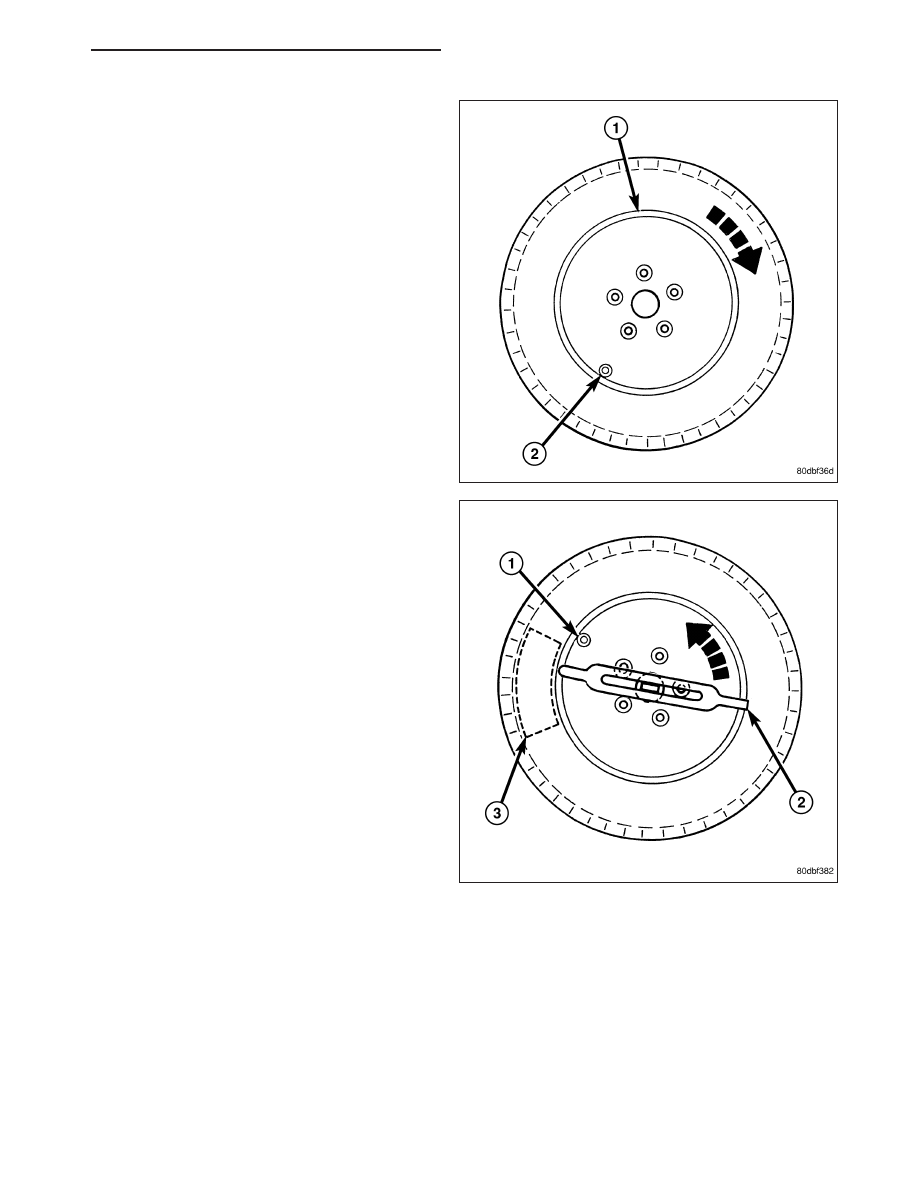Content .. 1310 1311 1312 1313 ..
Dodge Caliber. Manual - part 1312

a.
Rotating Wheel Tire Changers - Once the
wheel is mounted to the changer, position the
sensor valve stem (2) approximately 210° from
the head of the changer (located at 1) in a
clockwise direction before rotating the wheel
(also in a clockwise direction) to mount the tire.
Use this procedure on both the upper and
lower tire beads.
b. Rotating Tool Tire Changers - Position the
wheel on the changer so that the sensor valve
stem (1) is located approximately 210° clock-
wise from the installation end of the mounting/
dismounting tool (2) once the tool is mounted
for tire installation. Make sure the sensor is
clear of the lower bead breaker area (3) to
avoid damaging the sensor when the breaker
rises. Rotate the tool (2) in a counterclockwise
direction to mount the tire. Use this procedure
on both the upper and lower tire beads.
PM
TIRES/WHEELS - SERVICE INFORMATION
22 - 75